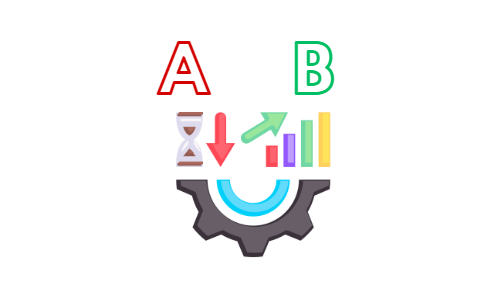Conversion Rate Optimisation, or CRO for short, is a strategic process designed to enhance the effectiveness of a website or digital asset in its role of converting visitor interactions into quantifiable customer actions. This metric is extremely vital in the realm of digital marketing, as it directly relates to the proportion of visitors who perform a desired action, be it making a purchase, signing up for a newsletter, downloading an app, or any other designated activity. CRO is considered the linchpin of a successful online business strategy as it directly influences the profitability and growth of an enterprise.
Delving deeper into CRO, involves a combination of qualitative and quantitative data to glean insights into user behaviour. The constructed hypothesis from these insights serves to guide the design of user experience adjustments. These tweaked designs are then implemented and rigorously tested using A/B or split testing to discern which variant elicits the best response from visitors.
The process doesn’t stop at implementing the best-performing variant; it’s a constant cycle of analysing, learning, testing, and optimising to ensure the website or digital platform continues to deliver optimal performance.
The Essence of Split Testing in Enhancing Website Performance
In the domain of web optimisation, split testing emerges as a critical instrument. It’s a method used to compare various iterations of a webpage, email campaign, or other digital assets to ascertain which one elicits the best performance based on a predetermined indicator, customarily conversion rate. The goal of it, is to facilitate evidence-based decisions, reducing the role of guesswork in website optimisation and increasing the likelihood of achieving the desired website performance.
Split testing, also known as A/B testing, commences with defining the goal, which might be an increase in website sign-ups, a reduction in bounce rate, or an improvement in product sales.
Subsequently, the current webpage version, known as the control, is pitted against one or multiple variants with alterations in design, content, or functionality. A portion of the site’s traffic is directed towards each version under identical conditions.

Data is collected related to visitor interactions and analysed to determine which version performed better. Through strategic implementation, this nascent data can meaningfully fortify the process, propelling website performance to unprecedented heights.
Realising the Potential of A/B Testing in CRO
1. Precision and Validation
CRO is not a one-and-done endeavour; it’s a continuous journey of improvement. Your website and marketing efforts should evolve alongside changing consumer behaviour and preferences. A/B testing facilitates this process by allowing you to test, refine, and retest, ensuring that you’re always optimising for the best possible outcomes.

3. User-Centric Optimisation
Your audience is at the heart of CRO, and A/B testing puts you squarely in their shoes. By evaluating different variations of your assets, you gain a deeper understanding of what resonates with your users. This insight empowers you to create a more user-centric experience, one that is more likely to convert visitors into customers or subscribers.
4. Cost-Effective Strategy
Marketing budgets are often tight, and resources are finite. A/B testing is a cost-effective strategy that ensures you get the most out of your existing resources. Instead of blindly investing in unproven changes, you allocate your resources to strategies that have proven to drive better results. This efficiency leads to a higher return on investment (ROI).
5. Adapting to Market Dynamics
Markets are dynamic, and what works today may not work tomorrow. A/B testing allows you to adapt swiftly to changing market dynamics. You can test new strategies, respond to emerging trends, and stay ahead of your competition, all while maximising your conversion rates.
How to Design a Robust Split Test

In the realm of conversion rate optimisation (CRO), the design of split tests, also known as A/B testing, serves as an instrumental pillar. The potency and reliability of CRO outcomes hinge significantly on how effectively these split tests are implemented. A robust split test is, in effect, a meticulously planned experimentation where different variables of a webpage are modified to discern which version drives greater user engagement or conversion. It is essentially a definitive method to eliminate bias and assumptions, and ensure data-driven decision making.
Designing a sturdy split test begins with a clear identification of the goal for the experiment, such as an increase in click-through rates, page views, or sign-ups. The next step involves formulating a hypothesis that conjectures what changes could potentially bring about improvement in the aforementioned metrics. Careful selection of variables for execution of the test forms the crux of the process. These variables could range from content elements like headlines, and color schemes, to structural elements like layout or navigation. This is followed by evenly diverting the traffic towards both versions of the page under experiment for a stipulated duration. During this trial period, data is gathered, analysed, and interpreted to determine which permutation worked best in achieving higher conversions. Inherently, designing a robust split test is about orchestrating a controlled experiment where the performance metric is the determinant of the better version among the two.
Selecting the Right Variables for your Experiment
The task of selecting the appropriate variables for your experiment can be a critical, yet complex one in the field of Conversion Rate Optimisation (CRO). Variables are integral elements since they are directly responsible for bringing changes to the site that you are experimenting on. These changes, no matter how minute or massive, have the ability to impact user behaviour, thus influencing the final outcome of CRO.
The Issue of Sample Size in Conversion Rate Optimisation
Obtaining an accurate representation of your audience’s behaviour is crucial in optimising the conversion rate. However, the function of sample size within this context presents a significant challenge to many digital marketers. This issue persists largely due to the complexities and intricacies associated with balancing precision and practicality.
The notion of sample size in conversion rate optimisation (CRO) refers to the number of visitors or users needed to obtain statistically relevant results from a specific experiment or split test. Irrefutably, the more users involved in the split test, the more precise the data generated. Conversely, larger sample sizes require more resources and time, potentially leading to a delay in decision-making or implementation. Therefore, it’s imperative for digital marketers to balance the need for precise data with the feasibility of having extensive sample sizes to ensure efficient and effective implementation of CRO strategies.
Overcoming the Pitfall of Over-Reliance on Tools in CRO

In the realm of digital marketing, Conversion Rate Optimisation (CRO) has emerged as a key player, with a plethora of sophisticated tools available to facilitate this process. These tools, some offering detailed data analytics and others allowing for meticulous split testing, can significantly enhance businesses’ ability to increase visitor conversion. However, there reside potential pitfalls in becoming overly reliant on such tools, hence this part of the discussion recognises the importance of striking a balance between the use of tools and human intuition in CRO.
The primary concern of excessive reliance on tools in CRO is the tendency to minimise the role of strategic thinking and analytical judgment. While sophisticated tools can provide critical metrics and data, they often fail to explain the ‘why’ behind the numbers. For instance, a tool might highlight a significant drop in conversion rate, but cannot account for contextual factors like changes in market trends, competitor strategy or consumer behaviour. Technological tools are also known to provide false positives due to prevailing issues such as insufficient sample sizes and inadequate test duration. Therefore, it’s essential to complement data-driven insights with human intuition and contextual understanding for a well-rounded CRO strategy.
- Tools are not capable of identifying or understanding the underlying causes behind data trends. They can only present the raw numbers and figures, leaving it up to human intuition to interpret these results in light of broader market trends and consumer behaviours.
- Over-reliance on tools may lead businesses into a false sense of security, ignoring potential problems due to insufficient sample sizes or inadequate test durations. These issues are often overlooked by automated systems but can significantly impact the accuracy of your CRO results.
- Relying solely on tools for CRO also risks missing out on innovative strategies that could potentially boost conversion rates even further. Human creativity and strategic thinking play an integral role in devising new ways to engage visitors and convert them into customers.
Another pitfall is neglecting qualitative insights while focusing too much on quantitative data from these tools. Qualitative feedback such as user comments, reviews, surveys etc., provide invaluable context that cannot be captured through numerical data alone.
- Tools typically focus more on quantitative aspects like click-through rates (CTR), bounce rate etc., whereas qualitative inputs help understand user experience better which ultimately drives conversions.
- User behaviour is complex and multi-dimensional; hence relying solely on numeric metrics might result in missed opportunities for optimisation.
In conclusion, while using sophisticated tools for CRO can certainly enhance efficiency and provide crucial insights, they should never replace strategic thinking or contextual understanding derived from human intuition. A balanced approach integrating both tool-driven analytics with human judgment will yield optimal results in any CRO strategy.
- Always consider external factors affecting your business – market trends, competitor strategies etc., when interpreting tool-generated reports.
- Regularly gather qualitative feedback from users alongside analysing quantitative data for comprehensive insights into visitor behaviour patterns.
Remember: Tools facilitate processes; they don’t dictate strategies!!
Making the Most of Your Successful Split Tests

Successful split tests can be interpreted as gold mines of insight, brimming with valuable data that can be leveraged to fortify your digital marketing strategies. They represent the culmination of a carefully orchestrated process that balances customer insight, creative execution, and strategic testing. Each success does not merely indicate a winning variable; it unveils a piece of the puzzle that can be exploited for maximum conversion rate optimisation (CRO).
The exploitation process begins with a comprehensive analysis of the successful test data, which should focus on understanding why the winning variable outperformed its counterparts. This could involve mapping out the customer journey to see how the experiment’s changes influenced behaviour, or conducting follow-up surveys to obtain qualitative information. Such a detailed exploration can yield a profound understanding of the customer’s needs and preferences, which can then be used to refine ongoing and future experiments. The subsequent step is to apply these learnings to enhance website design, content, and overall user experience, thereby leveraging split testing success for effective CRO. From this process, a cycle emerges—success leads to insight, which triggers improvement, and paves the way for additional successful split tests. It’s a self-sustaining loop of continuous learning and enhancement that is at the heart of effective digital marketing.
Continuous Learning: The Cycle of Testing and Optimisation
The relentless pursuit of improvement is at the heart of Conversion Rate Optimisation (CRO). This approach resonates strongly with the concept of continuous learning, which places an emphasis on consistent testing and optimisation. In essence, it nurtures a culture that values not only the success stories but also the inevitable setbacks, seeing them as integral parts of the learning process. In CRO, one does not simply ‘set and forget’. Each test, whether it yields positive or negative results, influences the future testing phase, presenting an opportunity to learn, adapt, and evolve the strategies employed.
In applying this concept to CRO, the starting point is to conduct an initial split test on the website. Various elements such as headlines, graphics, and call to actions are tweaked to create different versions of a web page. Traffic is then split between these versions and user interactions are monitored to identify which version contributes to a higher conversion rate. Armed with the knowledge drawn from this first experiment, adjustments are made and another round of testing begins. This cycle of testing, analysing, adjusting, and retesting continues iteratively, ensuring each new round of testing is informed by the last. Remember, it is not about one major change that miraculously solves all issues but rather smaller, systematic adjustments that lead to long-lasting improvements. Meanwhile, failures should not be seen as missed goals but as stepping stones that play a crucial part in building the bigger picture – the ultimate CRO strategy.
Embrace A/B Testing for Better CRO
In the world of Conversion Rate Optimisation, A/B testing is the compass that guides your journey to success. It takes the guesswork out of optimisation, ensuring that every change you make is grounded in data and has a purpose. By integrating A/B testing into your CRO strategy, you can continuously improve your website’s performance, enhance user experiences, and ultimately achieve your conversion goals. So, if you’re serious about optimising your online presence, it’s time to embrace A/B testing as an indispensable tool in your CRO toolkit.


